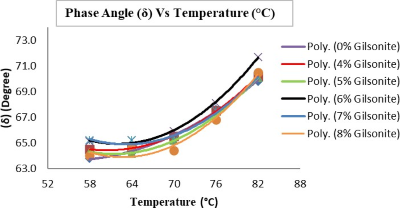Viscous Elastic Asphalt Characteristics of Cariphalte Modification with Addition of Gilsonite Viewed from Phase Angle Value
DOI:
https://doi.org/10.24036/cived.v11i2.575Keywords:
Cariphalte, Gilsonite, Performance Grade, Phase AngleAbstract
Performance Grade (PG) Bitumen is bitumen that is graded based on its performance at different temperatures. In the Superpave grading system, asphalt binders are classified according to their performance in extreme hot and cold temperatures and are referred to as performance grade (PG) asphalt. The main objective of assessing and selecting asphalt binder using the PG system is to ensure that the binder has properties suitable for the environmental conditions in the field. Cariphalte is a premium grade polymer modified bitumen used in road and airport construction and other similar applications. Cariphalte is a Styrene Butadine Styrene (SBS) modified bitumen. The SBS in Cariphalte ensures the formation of a 3-dimensional network in the bitumen thereby reducing the temperature susceptibility and increasing the stiffness modulus at high temperatures. Cariphalte is also resistant to oxidation, reducing deformation and slowing secondary solidification. To get an idea of the improvement in rheological properties due to the addition of gilsonite, tests were carried out on a mixture of cariphalte and gilsonite asphalt with 6 variations of gilsonite content. The tests carried out include basic rheological properties testing and mechanistic rheological properties testing. From this research, the test results showed that at the same temperature, asphalt with the addition of 0% gilsonite had the smallest phase angle (δ) compared to asphalt using the addition of gilsonite. This explains that the addition of gilsonite can increase the phase angle (δ) value of PG-76 asphalt, which makes the asphalt material have thicker characteristics.
Downloads
References
Zhao, L., & Cerro, R. (1992). Experimental characterization of viscous film flows over complex surfaces. International Journal of Multiphase Flow, 18(4), 495-516. https://doi.org/10.1016/0301-9322(92)90048-l.
Cheng, L., Yu, J., Zhao, Q., Wu, J., & Zhang, L. (2020). Chemical, rheological and aging characteristic properties of Xinjiang rock asphalt-modified bitumen. Construction and Building Materials, 240, 117908. https://doi.org/10.1016/j.conbuildmat.2019.117908.
Geckil, T., & Seloglu, M. (2018). Performance properties of asphalt modified with reactive terpolymer. Construction and Building Materials, 173, 262-271. https://doi.org/10.1016/j.conbuildmat.2018.04.036.
Ding, H., Zhang, H., Liu, H., & Qiu, Y. (2021). Thermoreversible aging in model asphalt binders. Construction and Building Materials, 303, 124355. https://doi.org/10.1016/j.conbuildmat.2021.124355.
Corté, J.-F. (2021). Review of the development and uses of hard grade asphalts in France. Journal of Road Engineering, 1, 73-79. https://doi.org/10.1016/j.jreng.2021.11.001.
Geckil, T., Issi, S., & Ince, C. B. (2022). Evaluation of prina for use in asphalt modification. Case Studies in Construction Materials, 17. https://doi.org/10.1016/j.cscm.2022.e01623.
Somé, S. C., Barthélémy, J.-F., Mouillet, V., Hammoum, F., & Liu, G. (2022). Effect of thermo-oxidative ageing on the rheological properties of bituminous binders and mixes: Experimental study and multi-scale modeling. Construction and Building Materials, 344, 128260. https://doi.org/10.1016/j.conbuildmat.2022.128260.
Zou, L., Zhang, Y., & Liu, B. (2021). Aging Characteristics of Asphalt Binder under Strong Ultraviolet Irradiation in Northwest China. Sustainability, 13(19), 10753. https://doi.org/10.3390/su131910753.
Gandhi, T., & Amirkhanian, S. (2008). Laboratory Simulation of Warm Mix Asphalt (WMA) Binder Aging Characteristics. Airfield and Highway Pavements. https://doi.org/10.1061/41005(329)17.
Physicochemical characteristics of RAP binder blends. (2014). Asphalt Pavements, 301-310. https://doi.org/10.1201/b17219-42.
Karakas, A. S. (2018). Aging Effects on Mechanical Characteristics of Multi-Layer Asphalt Structure. Modified Asphalt. https://doi.org/10.5772/intechopen.75698.
Hajikarimi, P., Shahsavari, H., Rahi, M., Sharif, F., & Nejad, F. M. (2018). The Effect of Zinc Stearate Modification on Aging Characteristics of Asphalt Binder. IOP Conference Series: Materials Science and Engineering, 416, 012083. https://doi.org/10.1088/1757-899x/416/1/012083.

Downloads
Published
Issue
Section
License
Copyright (c) 2024 Arief Aszharri, Nadra Mutiara Sari

This work is licensed under a Creative Commons Attribution 4.0 International License.

